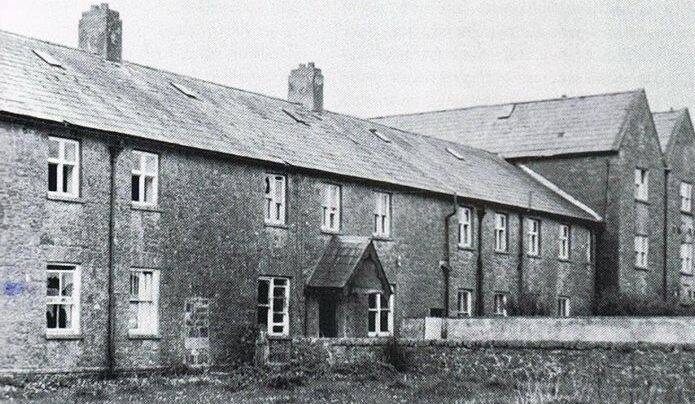“Babies born inside the institutions were denied baptism and, if they died from the illness and disease rife in such facilities, also denied a Christian burial.” It is a sentence, unattributed to any source, which repeats—either word for word or in a close approximation—in hundreds of articles concerning the now infamous deaths and burials of hundreds of children in Tuam, Galway between 1925 and 1961. This appalling sacramental indifference is referenced in major U.S. and U.K. publications and cited in leading online opinion journals like Salon as more evidence of the cruelty of the Bon Secours sisters who ran the home and the Catholic Church in Ireland in general.
But, just as the original story, which left many readers with the perhaps now fixed impression of depraved nuns tossing deceased infants into cesspools (I kid you not), was inaccurate, there is no evidence to back up this other troubling and often repeated angle of the story. In fact quite the opposite is true.
Father Fintan Monahan, Tuam’s diocesan secretary, told me this morning that the diocese has in its records thousands of baptismal certificates for the children that were born or brought into the home in Tuam. Beyond that physical evidence of the baptismal record, he asked the diocesan archivist to look further into the issue to see if any evidence of a past policy to refuse to baptize children born out of wedlock could be teased out of the diocesan archives. “We can find no evidence that it was ever the policy,” he reports.
Beyond that, as a priest, he has never heard of such a refusal. It is not a normal practice in Tuam today, he says, or anywhere he can think of in Ireland, and it “would not have been a normal practice [to deny baptism in the past,]” he says.
“I have talked to older priests about [the allegation], and they’re completely baffled,” he says. “I would be very surprised if that was a policy anywhere,” he says, adding, “I’m amazed that [the allegation] has been published.”
Monahan can only speculate, of course, and perhaps there has been enough speculation on this matter as it is, that journalists may have heard stories of individual priests who may have resisted baptizing children who were born to unmarried women and drawn the wrong conclusions from such anecdotes. That of course does not excuse or explain the legions of journalists who have replayed this sentence (or a variation of it), without citation, over and over and over again.
So far, I have yet to see corrections issued for either the original misleading reporting, the screeding and ranting that it inspired or for the unattributed and apparently groundless assertion that these deceased infants and children were denied baptism. In fact quite the contrary: Many opinion writers have essentially doubled-down on the tale of Tuam, arguing that it is irrelevant that the original story was got wrong, that even historical and economic context—health and economic conditions in Ireland then or comparable treatment and outcomes for orphans and abanoned children in other nations at the time—are in fact irrelevant. The only thread of this tale worth following apparently is the suffering endured by these forgotten children. But while their suffering remains undeniable and deeply sad, the full comprehension of it awaits a further and thorough investigation, one the international press has so far demonstrated it is wholly incapable of undertaking.
UPDATE (6/20): After our report yesterday on baptismal certificates recorded in Tuam, I queried the Associated Press regarding their stories on the Tuam Mothers and Babies Home.
Today they issued the following correction:
Ireland-Children’s Mass Graves story
DUBLIN (AP) — In stories published June 3 and June 8 about young children buried in unmarked graves after dying at a former Irish orphanage for the children of unwed mothers, The Associated Press incorrectly reported that the children had not received Roman Catholic baptisms; documents show that many children at the orphanage were baptized. The AP also incorrectly reported that Catholic teaching at the time was to deny baptism and Christian burial to the children of unwed mothers; although that may have occurred in practice at times it was not church teaching. In addition, in the June 3 story, the AP quoted a researcher who said she believed that most of the remains of children who died there were interred in a disused septic tank; the researcher has since clarified that without excavation and forensic analysis it is impossible to know how many sets of remains the tank contains, if any. The June 3 story also contained an incorrect reference to the year that the orphanage opened; it was 1925, not 1926.
UPDATE: The Washington Post issued a correction/clarification on June 9 that I had not seen and added some interesting background. You can read it here.









I'm afraid I don't have any info about that and until we start hearing from people who grew up in the home or worked with the sisters or assisted in the care of the children, we probably cannot know.